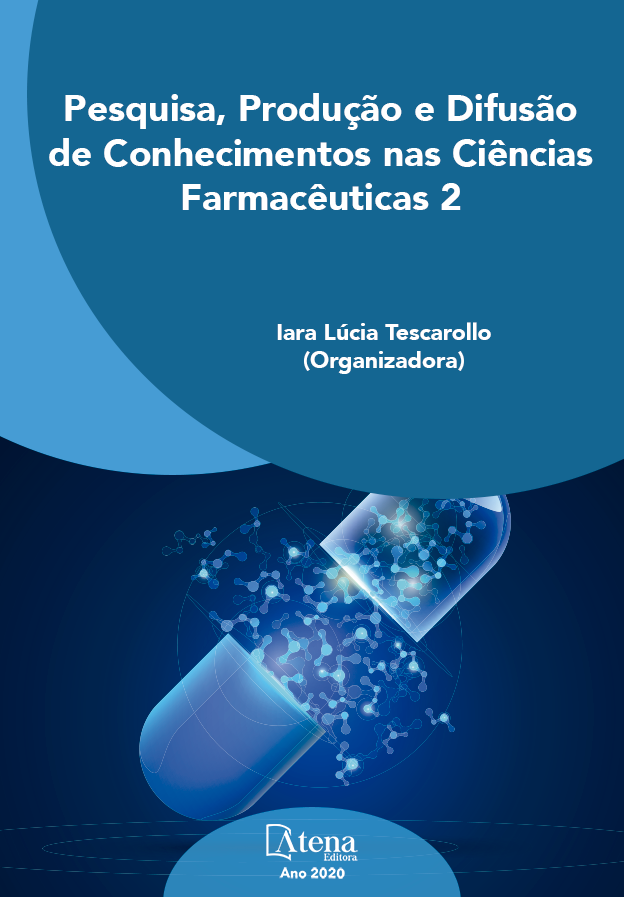
AVALIAÇÃO DAS ATIVIDADES ANTIOXIDANTE E CITOTÓXICA DO EXTRATO HEXÂNICO DAS FOLHAS DE Sideroxylon obtusifolium (ROEM. & SCHULT.) T.D. PENN
A Sideroxylon obtusifolium, conhecida popularmente como
“quixabeira”, é uma espécie nativa das regiões do Cerrado brasileiro, mas
também é encontrada no bioma Caatinga. A casca dessa espécie é muito
utilizada na medicina popular para o tratamento de dor e inflamação. No
entanto, não há muitos estudos ou relatos sobre a utilização de outras partes
da planta. Neste contexto, o objetivo desse trabalho foi avaliar a atividade
antioxidante e citotóxica do extrato hexânico das folhas de S. obtusifolium
(EHSo). A prospecção fitoquímica do EHSo foi realizada por cromatografia em
camada delgada (CCD). A determinação da atividade antioxidante in vitro do
EHSo foi avaliada pelos métodos de sequestro dos radicais livres DPPH e
ABTS, fosfomolibdênio e eliminação de radicais superóxido (SOD). A
citotoxicidade do extrato foi avaliada pelo ensaio colorimétrico de MTT (3-(4,5-
dimethylthiazol-2-yl)-2,5-diphenyltetrazolium bromide) frente à linhagem de
fibroblastos murinos (L929). A análise fitoquímica identificou taninos
hidrolisáveis, flavonoides, triterpenos, esteroides, mono e sesquiterpenos como
os principais metabólitos presentes no EHSo. Nos testes antioxidantes, o
extrato hexânico apresentou atividade significativa, com concentração mínima
capaz de inibir 50% do radical DPPH (CI 50 ) de 605,86± 0,02 µg/mL e de
1.136,27± 0,01 µg/mL para o radical ABTS. Pelo método do fosfomolibdênio, a
CI 50 foi de 582,12± 0,02 µg/mL, enquanto que pelo ensaio de eliminação de
radicais superóxido foi de 791,91± 0,03 µg/mL. No ensaio citotóxico, o EHSo
diminuiu a viabilidade celular dos fibroblastos em todas as concentrações
testadas (0,78 a 50 µg/mL). Estes dados indicam que o extrato hexânico de S.
obtusifolium apresentou uma relevante atividade antioxidante pelos métodos
testados, podendo estar associada à presença de compostos fenólicos em sua
composição, além de ser citotóxico frente à linhagem de fibroblastos L929.
AVALIAÇÃO DAS ATIVIDADES ANTIOXIDANTE E CITOTÓXICA DO EXTRATO HEXÂNICO DAS FOLHAS DE Sideroxylon obtusifolium (ROEM. & SCHULT.) T.D. PENN
-
DOI: 10.22533/at.ed.6482020119
-
Palavras-chave: Quixabeira. Radicais livres. Viabilidade celular.
-
Keywords: Quixabeira. Free radicals. Cell viability.
-
Abstract:
Sideroxylon obtusifolium, popularly known as “quixabeira”, is a
native species of the Brazilian Cerrado regions, but is also found in the
Caatinga biome. The bark of this species is widely used in folk medicine to treat
pain and inflammation. However, there are not many studies or reports on the
use of other parts of the plant. In this context, this work’s goal was to evaluate
the antioxidant and cytotoxic activity of the hexanic extract of the leaves of S.
obtusifolium (EHSo). The phytochemical prospecting of EHSo was performed
by thin layer chromatography (CCD). The determination of the antioxidant
activity in vitro of EHSo was evaluated by the methods of scavenging free
radicals DPPH and ABTS, phosphomolibdenum and elimination of superoxide
radicals (SOD). The cytotoxicity of the extract was evaluated by the MTT
colorimetric assay (3-(4,5-dimethylthiazol-2-yl)-2,5-diphenyltetrazolium bromide)
against the murine fibroblast line (L929). Phytochemical analysis identified
hydrolyzed tannins, flavonoids, triterpenes, steroids, mono and sesquiterpenes
as the main metabolites present in EHSo. In the antioxidant tests, the hexane
extract showed a minimum concentration capable of inhibiting 50% of the DPPH
radical (lC 50 ) of 605.86 ± 0.02 µg/mL and 1,136.27 ± 0.01 µg/mL for the ABTS
radical. By the phosphomolybdenum method, the lC 50 was 582.12 ± 0.02 µg/mL,
whereas by the superoxide radical elimination test it was 791.91 ± 0.03 µg/mL.
In the cytotoxic assay, EHSo decreased the cell viability of fibroblasts at all
concentrations tested (0.78 to 50 µg/mL). These data indicate that the hexanic
extract of S. obtusifolium showed a relevant antioxidant activity by the tested
methods, and may be associated with the presence of phenolic compounds in
its composition, in addition to being cytotoxic against the L929 fibroblast line.
-
Número de páginas: 15
- Teresinha Gonçalves da Silva
- Maria Érika da Silva Vilela
- Paula Andrielle Laurentino de Oliveira
- George Torres de Lima
- Marllon Alex Nascimento Santana
- Bruno Oliveira de Veras
- Alícia Bezerra Martim da Silva
- Caio Cezar Oliveira de Lucena
- Caroline Leal Rodrigues Soares
- Pedro Paulo Marcelino Neto
- Michelly Rodrigues Pereira da Silva
- Alexandra Débora Leite Borba


